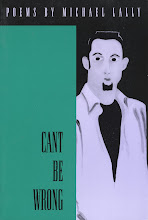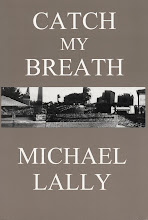
If you’re a Jack Kerouac scholar, or just a big fan (as I am) these two books are legendary. Both of them have been talked about even since long before Kerouac passed away. But neither were published until recently.
WAKE UP: A LIFE OF THE BUDDHA is Kerouac’s reinterpretation of Buddha’s legend. It was written in the 1950s when few “Americans” had any idea who Buddha even was, let alone had any interest in his life.
Kerouac had trouble getting it published, like a lot of his writing, because it was often too original in its subject matter and/or its approach to that. WAKE UP was no exception. It’s taken this long—four decades—since Kerouac’s death, and more than a half century since he wrote it for publication!
When he was still alive, Kerouac published a much smaller text based on his studies of Buddhism and other “Eastern” philosophies and spiritual paths, THE SCRIPTURE OF THE GOLDEN ETERNITY (City Lights books). It’s a poetic meditation on the deeper meanings of the Eastern texts he was studying, much of it Buddhist.
But he intended WAKE UP to mean much more than his other writings on Buddhism. It’s a true attempt to introduce to Americans what Buddha was all about, and to do it as reverentially as he could, treating the text as something outside his own writerly impulses, making that clear on the title page where instead of “by Jack Kerouac” he typed “Prepared by Jack Kerouac.”
When he was still alive, many Buddhists scholars and practitioners dismissed Kerouac’s interpretations of their sacred texts and their founder as too wildly personal and imaginative than solidly researched and textually factual and consistent.
Having studied these texts on my own as an autodidact before I finally got a college education on the G.I. Bill, and having come from the same kind of ethnic Roman Catholic mystical tradition, I totally bought Kerouac’s interpretations and even poetic riffs on Buddhism and other Eastern philosophies or spiritual traditions.
Unfortunately Kerouac didn’t have much support for his take on all this and is not alive to see it vindicated in the introduction to this first true publication of WAKE UP: A LIFE OF THE BUDDHA. It’s by Robert A. F. Thurman (yeah, Uma’s father) one of this country’s foremost, if not THE foremost, Buddhist scholars. He totally praises WAKE UP—and Kerouac’s approach to Buddha and Buddhism in general—as accurate, and even inspirationally advanced.
His opening sentences make that clear:
“What a surprise! Working on this introduction, it has become apparent to me that Jack Keroauc was the lead bodhisattva, way back there in the 1950s, among all of our American predecessors.”
About time. He goes on to write several more pages that in themselves are worth the price of the book, at least to me (and any Kerouac fan, or any reader with an interest in Buddhism). They’re revelatory, celebratory, and a mini-education in Buddhism, Buddhism in America, and the relationship between Kerouac and his Catholic mysticism and Buddhism in America.
Kerouac’s book itself is another matter. If you’re a fan, you’ll probably dig it, as I did. If you’re not, this isn’t the best introduction to what makes Kerouac’s writing so exciting and original. It’s definitely his voice, but his most wide-ranging and yet repetitive voice, earnestly working very hard to convey the essence of Buddha’s experience and teachings. Not a smooth easy read.
 If you want that, the other legendary book that most fans had been hearing about since before Kerouac died, is a collaborative novel he wrote with William S. Burroughs (“William Lee” as per the manuscript title page, which also says “John” Kerouac)—AND THE HIPPOS WERE BOILED IN THEIR TANKS.
If you want that, the other legendary book that most fans had been hearing about since before Kerouac died, is a collaborative novel he wrote with William S. Burroughs (“William Lee” as per the manuscript title page, which also says “John” Kerouac)—AND THE HIPPOS WERE BOILED IN THEIR TANKS.The title supposedly came from a newspaper headline about a fire at a circus. Or at a zoo. Or from a radio news report. Or… Over the years it became vague, and it really doesn’t matter because ultimately, except as ironic distancing, the title doesn’t have a lot to do with the text. Although a case could be made for it’s standing as a metaphor for situations too weighty or creatures too trapped to avoid.
The story is based on the truth, a famous murder that is referred to or featured in many “Beat” texts and legends. In August of 1944, a friend of Burroughs’ from his native St. Louis, Lucien Carr stabbed David Kammemer and threw his body in the Hudson.
Carr confessed to Burroughs and Kerouac, the latter helping him get rid of the murder weapon, a supposed “boy scout” knife (a nice touch to emphasize that Carr was still basically a teenager and Kammemer was an older man—in his thirties—who was a “homosexual” and had been supposedly “stalking” Carr).
Only actually the murder victim was a friend of Carr’s and Kerouac’s and Burroughs and Carr sometimes hung out with him, indulged Kammerer’s crush on him, and tolerated him until that fateful morning when he no longer did.
The novel is written in alternating takes for most chapters, Kerouac writing as “Mike Ryko” and Burroughs/”Lee” as “Will Dennison.” The language is close to that of the typical pulp fiction detective novel of the time, only more so (some of the profanity and sexual situations would have been considered too risky by publishers of the time, one of the many reasons it was repeatedly rejected). The pace too is often that of pulp fiction, and yet there are leisurely interludes or slightly askew descriptive and narrative passages that are more about the perspectives of these burgeoning “Beats” (the term wouldn’t be popularized until over a decade after they wrote this) and their world than the “plot.”
It’s a quick, easy read, and totally informative if you don’t know much about mid-20th century city life among the young and restless, or if all you know comes from movies and novels of the time. This book cuts through all the pretenses to “the Greatest Generation” claim, that may be true enough for a lot of the generation that survived the Great Depression and fought and won World War Two, but Kerouac and Burroughs and their crowd were a part of that generation and don’t talk or act or live much like anything hyped as “The Greatest” anything—except maybe writers and artists, and for many of us fans, original thinkers.
That’s one of the reasons I dig this book so much and think a lot of others will as well. It tells a part of the story of those times and the people struggling through them that has been left out—except in some of Kerouac’s novels, but those are tinted with his personal search for spiritual meaning and redemption while AND THE HIPPOS is much more “just the facts ma’am” style narrative and any romantic and/or sentimental and mystical spirituality that may slip into small passages of Kerouac’s sections are overwhelmed by the lack of all that in Burroughs’ chapters.
As the oldtime “hep cats” used to say (like Louis Armstrong or Hubert Selby Jr.) this book is “a gasser.” At any rate, at least for those interested in those times and these authors.
















No comments:
Post a Comment